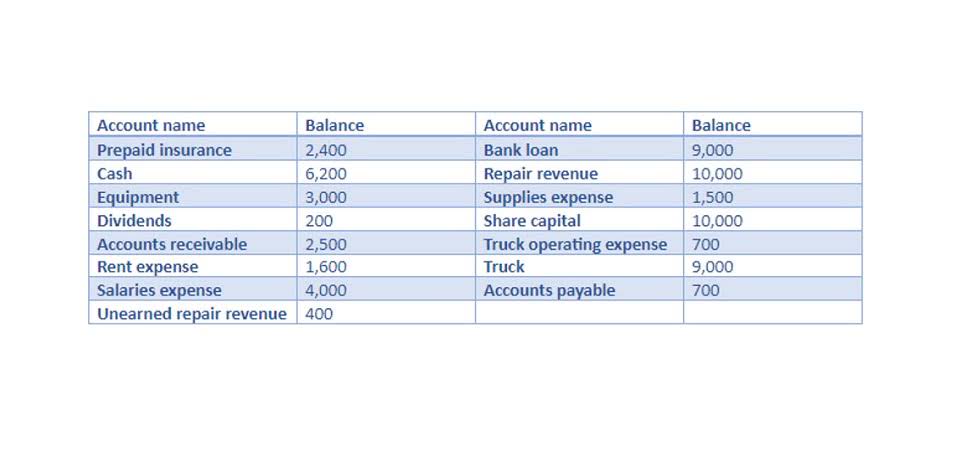
The common stock outstanding of a company is simply all of the shares that investors and company insiders own. This figure is important because it translates a company's overall performance into per-share metrics, making an analysis much easier regarding a stock's market price at a given time. If there are 100 shares outstanding and you buy one, you own 1% of the company's equity.
Shares outstanding vs float
- There are times when a company considers its stock to be undervalued.
- Some companies’ balance sheets list the common shares outstanding straight out.
- This is because the total number of outstanding shares will change over time.
- Preferred stock is a special class of shares that is generally considered a hybrid instrument, including properties of both a debt and equity instrument.
When a company buys back its own shares, that stock is accounted for as "treasury stock" on its balance sheet. Treasury stock is no longer outstanding -- the company itself now owns it, not an investor or employee, but it has still been issued. Outstanding shares are the aggregate number of shares that a corporation has issued to investors. This is an important number, since it is used to calculate the earnings per share of a publicly-held business. It is a less-commonly used number in the financial reporting of privately-held businesses.
- It’s important to have the right trading tools — that’s why I think every trader should use StockToTrade.
- If you do not understand what are outstanding shares or how to calculate it, then this article is perfect for you.
- All these scenarios are important for investors to understand before they make a decision to buy or sell.
- Stocks that have a smaller float are generally more volatile than stocks with a larger float due to their limited availability.
- If you are analyzing a company’s stock, it is important to take into consideration the outstanding shares.
- A company's number of outstanding shares is dynamic, changing over time.
Shares Outstanding
However, it is important to double-check that the number only includes shares that have actually been issued by the company. Outstanding shares are an important metric for investors and analysts to consider when evaluating a company. By knowing the number of outstanding shares, investors can determine the company's market value, as well as calculate key metrics such as earnings per share and price-to-earnings ratio. For example, you can calculate a company’s earnings per share (EPS), a common metric used to compare companies’ performances. You can find a company’s earnings per share by dividing the company’s profit by its outstanding shares of common stock. For example, let’s say you want to calculate the weighted average number of outstanding shares for a company over two reporting periods of 6 months each.

Weighted Average Shares vs. Shares Outstanding
Generally, you won't need to calculate this number yourself and it will be listed for you on a company's 10-Q or 10-K filing. Instead, the weighted average incorporates changes in the number of outstanding shares over a certain period of time. If the company has not bought back shares from investors and does not have treasury shares, this line item won’t show up on the balance sheet. Once you’ve located the number of treasury stocks, write it down for your calculations. The balance sheet is a financial statement issued by the company that provides a full accounting of the company’s assets, liabilities, and shareholder’s equity at a particular moment in time.
Shares Outstanding vs. Floating Shares
- The image below shows a section of Apple's (AAPL -0.97%) balance sheet from 2016 through 2020.
- First, the company has to do its job and have strong, consistent financial performance, delivering constant earnings growth.
- For example, in a 2-for-1 stock split, the share price is halved, but the outstanding shares double, improving affordability and attracting a broader investor base.
- And the number of issued shares can’t exceed the authorized total number of shares.
For basic weighted average shares, "basic" essentially means non-dilutive. The number of outstanding shares changes periodically as the company issues new shares or repurchases existing shares, splits its stock or reverse-splits it. In order to calculate a company’s earnings per share (EPS), a company’s net income is divided by its weighted average shares outstanding. Many companies buy back shares as part of their capital allocation strategy.
Premium Investing Services

If a company does financing, that creates more shares outstanding. And if the company that buys the shares for a deep discount turns around and sells them into the market, those also become part of the float. Penny stock companies usually create more shares and dilute shareholders through toxic financings.
What Are Shares Outstanding?

The weighted average shares outstanding, or the weighted average of outstanding shares, takes into consideration any changes in the number of outstanding shares over a specific reporting period. In effect, it weights any change in the number of shares outstanding according to the length of time that change was in effect. To understand the calculation of outstanding shares, let us take an example of a company that has recently issued 1000 shares. Out of these, 600 shares are issued as floating shares for the public, and 200 shares are issued as restricted shares to the company insiders. Potential investors in a company look at the EPS as an indicator of the company's profitability and compare this metric with the EPS of other companies before making an investment decision.
What is the difference between authorized shares and outstanding shares?
For example, a company has 50 million shares outstanding, but 48 million of these shares are tied to insiders and institutions. This leaves only 2 million shares for the public, meaning that the float of only two million shares may restrict the stock's liquidity. There are still some places where you can find this information, other than the SEC's website. For example, you can usually how to calculate outstanding shares find the number of shares outstanding on investor relations webpages, which are only available for publicly listed companies or on stock exchanges. These shares are any authorized shares, excluding treasury stock, held or sold to a corporation's shareholders. Here, the balance sheet reports 8,019 million shares issued and 3,901 million treasury shares, as of September 30, 2022.
Issued Shares
Public companies are required to report their number of shares outstanding in their quarterly and annual disclosures to the Securities & Exchange Commission. The numerator in the earning per share (EPS) formula is net income from the income statement, which tracks the financial performance of a company over a period of time. Outstanding shares also help in understanding the market capitalisation or the value of the business. Understanding how to calculate a weighted average can also be useful to individual investors who want to calculate their cost basis. The cost basis refers to the original purchase price of an asset or investment for tax purposes. Investors calculate the cost basis to determine if their investment has been profitable or not, along with any possible taxes they might owe on the investment.

Reverse Stock Split
Past performance is not necessarily indicative of future returns. Dilution lowers a stock’s price if the company issues a lot of shares quickly. Stock splits and dilutions increase the number of outstanding shares. To issue more shares, the company would have to first increase the number of authorized shares.